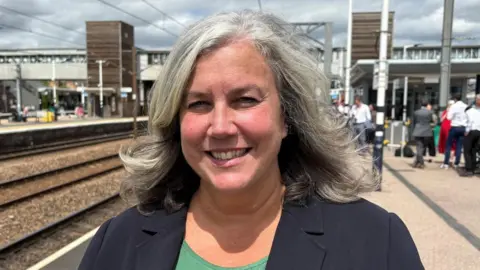In a significant move for public transportation in the United Kingdom, rail services connecting south Essex to London have returned to public ownership for the first time since the late 20th century. The popular operator c2c, which provides critical rail services between Fenchurch Street and Shoeburyness, was formally nationalized on Sunday, marking a pivotal shift in the future of train operations in the region. This change is part of a broader initiative, with c2c now integrated into the newly established Great British Railways, a government initiative designed to oversee the rail system across England, Wales, and Scotland.
Transport Secretary Heidi Alexander addressed the necessity for such a transition, citing the detrimental effects passengers have endured due to “spiraling costs, fragmentation, and waste” in the rail service. Under recent legislative changes, specifically the Passenger Railway Services (Public Ownership) Act 2024, which was passed by the Labour government in November, ministers have been permitted to reintroduce rail companies to public ownership when their current contracts expire. This legislative framework has facilitated the nationalization process, with c2c being only the sixth operator to be publicly owned since the enactment of this law.
Looking ahead, Greater Anglia, another rail operator providing crucial services throughout East England, is set to follow suit on October 12. The government is optimistic that these transitions will lead to significant improvements and offer extensive benefits to rail passengers. Alexander expressed her intent for public ownership to address “deep-rooted problems” present in the railways and stated that a unified network under the Great British Railways will aim to deliver excellence in services across the board, uniting various operations under one brand and mission.
Data suggests that nationalization could save up to £150 million and potentially decrease the frequency of delays and cancellations, which have been a persistent issue for commuters. Labour MP David Burton-Sampson, representing Southend West and Leigh, has echoed the sentiments surrounding the expected improvements, assuring passengers that they will ultimately experience a more reliable service characterized by better ticketing consistency and enhanced punctuality.
Despite the anticipated benefits, concerns have been raised regarding the nationalization process. Jerome Mayhew, the shadow rail minister and Conservative MP from Norfolk, previously expressed skepticism, indicating that nationalization might inadvertently lead to increased financial burdens on taxpayers through heightened costs associated with leasing rolling stock. He cautioned against the ideological motivations that could risk operational success in favor of public ownership.
In light of these developments, the sentiment surrounding the nationalization appears to be cautiously optimistic among many stakeholders. By prioritizing public ownership, the government aims to rectify prior systems that have been criticized for inefficiency and lack of accountability to the public they serve. The historical context of rail privatization and the ensuing journey towards nationalization serve as a reminder of the complexities within the transportation sector as it seeks to evolve in line with public needs.
In conclusion, as c2c transitions back to public ownership, the implications for rail services in Essex and beyond could weave a new narrative for public transport. This shift represents a crucial chapter in British transport policy, aiming to enhance passenger experience while addressing operational constraints that have plagued the rail system for years. Thus, stakeholders and passengers alike eagerly await the forthcoming changes and their potential impact on daily commutes in the region.











